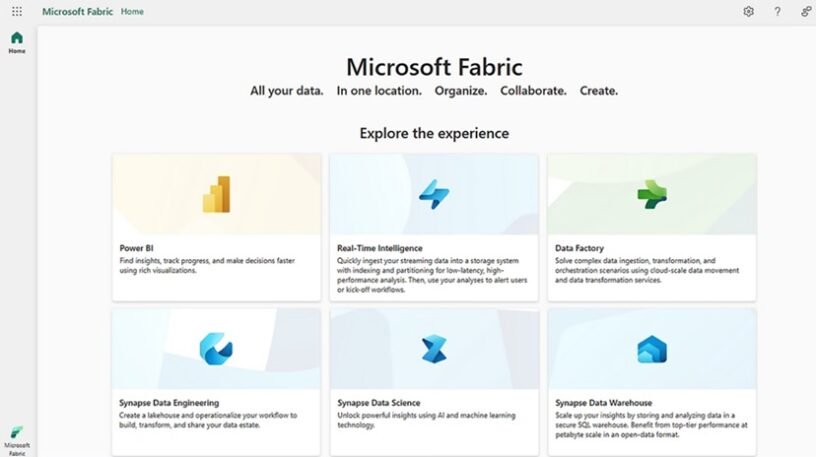In today’s data-driven world, businesses are constantly bombarded with information. But what if you could analyze this information as it’s happening, rather than waiting for it to pile up? That’s the promise of Microsoft Fabric’s new real-time intelligence capabilities.
What is Microsoft Fabric?
For those unfamiliar, Microsoft Fabric is a unified platform for data analytics. It brings together all your data sources and tools into one central location, making it easier for teams to collaborate and gain insights from their data.
Introducing Real-Time Intelligence
The latest update to Fabric introduces a game-changer: real-time intelligence. This powerful new feature allows you to analyze data streams as they’re being generated. This means you can get instant insights into what’s happening in your business, without having to wait for batch processing or reports.
Real-World Applications
Real-time intelligence has the potential to revolutionize a wide range of industries. Here are a few examples:
- Transportation: Imagine being able to track the location and status of your entire fleet of vehicles in real time. This would allow you to optimize routes, identify potential delays, and ensure the safety of your drivers and passengers.
- Manufacturing: Real-time data from sensors on your production line can help you identify and address issues before they cause costly downtime. You can also use this data to optimize your production processes and improve efficiency.
- Customer Service: By analyzing customer interactions in real time, you can identify and address customer issues as they arise. This can lead to higher customer satisfaction and loyalty.
Beyond Real-Time Intelligence
Real-time intelligence is just one of the exciting new features in Microsoft Fabric. The update also includes a workload development kit that makes it easier to build custom data applications. And there’s also AI-powered Q&A, which allows you to ask natural language questions about your data and get immediate answers.
Conclusion
Microsoft Fabric’s real-time intelligence is a powerful tool that can help businesses unlock the value of their data. By analyzing data streams as they’re happening, businesses can gain instant insights that can lead to better decision-making and improved results.
This is just a starting point, of course. With its wide range of features, Microsoft Fabric has the potential to transform the way businesses collect, analyze, and use data. So, if you’re looking to get ahead of the curve in the data-driven economy, Microsoft Fabric is definitely worth a closer look.

Here are few frequently asked questions on Microsoft Fabric:
What is the Microsoft Fabric?
Microsoft Fabric is an all-in-one analytics platform designed to streamline data management and empower businesses to gain insights from their data. It caters to various data needs, including:
- Data integration: Fabric simplifies the process of consolidating data from multiple sources into a unified environment.
- Data exploration and analysis: It provides tools for data scientists and analysts to explore, clean, transform, and analyze data.
- Real-time analytics: Fabric enables real-time data processing and visualization, allowing you to monitor and react to trends as they occur.
- Data visualization: It offers tools to create clear and informative data visualizations for effective communication of insights.
Microsoft Fabric integrates with various Microsoft services like Power BI, Azure Synapse Analytics, and Azure Data Factory to provide a comprehensive data analytics solution.
Is Microsoft Fabric free?
Microsoft Fabric offers a free trial with limited capacity. However, for ongoing use, you’ll need a paid subscription. The pricing structure depends on your specific needs and data volume.
Will Microsoft Fabric replace Azure?
No, Microsoft Fabric is not intended to replace Azure. Azure is a broader cloud computing platform encompassing a vast array of services, including storage, compute, networking, and analytics. Fabric specifically focuses on data analytics functionalities within the Azure ecosystem.
What is the difference between Microsoft Fabric and Azure?
Here’s a table summarizing the key differences between Microsoft Fabric and Azure:
| Feature | Microsoft Fabric | Azure |
|---|---|---|
| Focus | Data analytics and business intelligence | Cloud computing platform |
| Services | Data integration, data management, analytics tools | Storage, compute, networking, analytics (Fabric) |
| Pricing | Free trial, then paid subscriptions | Pay-as-you-go or fixed monthly subscriptions |
In essence, Microsoft Fabric leverages Azure’s cloud infrastructure to provide a unified platform for data analytics tasks, while Azure offers a much broader range of cloud services beyond just data analytics.




2 Pingbacks